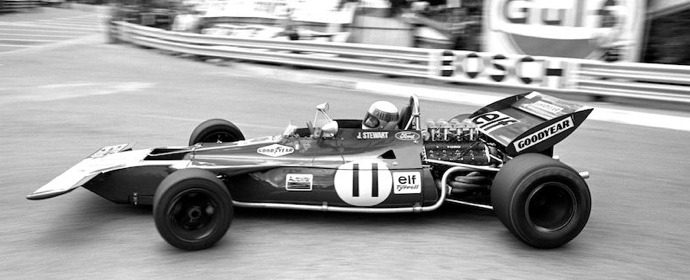By William Edgar | Photographs as Credited
It was July 19, 1974 that I really got to know John Young Stewart, even though I’d already met and worked with him several years before that British Grand Prix Friday practice day riding with him in a chauffeured Daimler out to Brands Hatch, a distance of some 25 miles from London’s Savile Row where we’d first made a stop at Jackie’s tailor. In the limousine with us were a cameraman and his sound recordist. Half turned to face Jackie in back, I sat up front with our driver. We were making a documentary for Trans World International, the film branch of International Management Group, better known as IMG, Stewart’s representative agents, then and still now. I was asking Jackie questions about his life in general, and more specifically of his years in racing and what he was presently doing in his then-recent retirement from Formula One, including this particular day of his providing color commentary for the BBC race weekend telecast. My recollection of that day and of how readily we were waved through traffic by Brands Hatch gate marshals, with Britain’s three-time World Champion aboard, remains vivid to the point of obsessing on the past.
No Subscription? You’re missing out
Get immediate ad-free access to all our premium content.
Get Started



